There is home video of my mom and me from a few days before I gave birth to my son. We’re laughing about how one day we’ll look back on the video and think we look so young.
“Look how black my hair is!” I say, and we both crack up. Because that was always what my mom said when she looked at any picture of herself. It is entirely possible that future generations will look at pictures of me, as a young mom, and think I’m a grandmom of undetermined age.
That’s what I thought about as I read The Golden Dress, a fairy tale by L.L. Barkat, illustrated by Gail Nadeau. It’s a story about an old woman who gives a dress with a touch of magic to her only daughter. At first the idea of an old woman with a daughter perplexed me, until I remembered my own not-black hair. In this book, when the text perplexes, I look to the art, and when the art raises questions, I look to the text. It’s an infinite, beautiful loop, as a collaboration between an artist and a writer should be.
The art actually came first, inspiring the story. Then the story changed, as stories do. Then, in a loop of its own, the creative process changed the art.
Nadeau lives in upstate New York. In 2008, she found a transparency of a dress that was a family heirloom. Nadeau had a photograph made, then scanned it into her computer. She made copies using a now-discontinued computer program called Picture It! (perhaps the exclamation mark doomed the brand name). Then she painted on the copies, creating layers. The errors she made inexplicably led to better art.
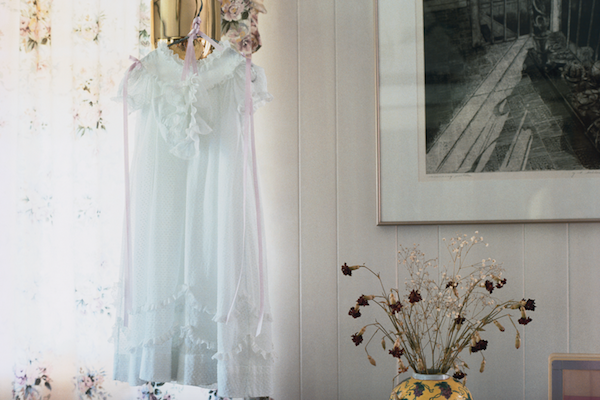
Heirloom dress and bonnet. Image was captured with the one remaining slide at the end of a roll of Kodachrome, in June, 1992.
“I scrape off a lot of paint or rip something off and try something else,” Nadeau said. “Many times I love what’s left behind, something I couldn’t have created any other way.”
She couldn’t stop painting a dress and a rectangle beside it. Over and over.
“When someone dies, I make a dress for them. If something wonderful happens, I make a dress for them. I can’t answer why it became an obsession — I’ve been questioning myself ever since I started doing it,” Nadeau said. “There’s a loneliness to that single dress.”
Working with the same basic structure, yet finding myriad ways to render it, Nadeau finds herself creating art about people and for people without them realizing it.
“It’s a secret for me, and I sort of like that,” she said. “Oddly enough, sometimes I make that thing with them in mind, and they like it above all others. Or they’ll say, ‘I had a dress like that when I was a kid.’”
After she had created more than one hundred dresses, she began to collage them, and that’s when Barkat saw her work. Nadeau began working with collage when she was caring for her mother.
“I said, ‘I’m not doing any art. I’ll just take care of her.’ I ended up doing the most [art] I ever did in one period,” she said.
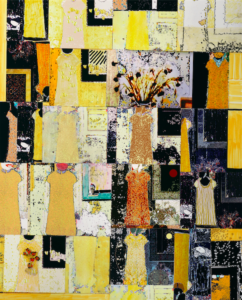
The collage that inspired Barkat to initiate the book project. It does not appear in the book.
When Nadeau and Barkat began working together, they worked from completed art, and although the art triggered a certain story initially, a new story instead arose along the way, because Barkat chose to listen to the art.
“The images had their way,” Nadeau said. Eventually, the story gave its heart to the art, too, and the original full collage of dresses that appeared at the story’s conclusion was replaced with a whole new freshly created collage. This artistic decision ended up releasing the dress from its lonely room.
In yet another cycle of giving and receiving, Barkat’s eldest daughter, an artist in her own right, helped conceive of a special moons collage that acts as the story’s gateway to the central character’s final crisis.
Nadeau said that in the process of creating the book, she enjoyed learning why and how “we write the things we write.” She appreciated that Barkat had not only publishing experience and writing experience, but also educational experience.
“She has the experience of being a teacher and knowing how to pull things out of children,” Nadeau said.
Similarly, Nadeau is continually pulling things out in her art, even when she doesn’t realize it. She says if you look carefully at the page with the raven, a piece originally called “Willow & Crow,” you can see a small woman in white beside the emerald dress.
“When something is there, it’s not like I plan it,” Nadeau said. “In ‘Willow & Crow,’ the woman who appears at the bottom, I only saw her after working for many, many hours. I did not create that woman. She came in there on her own.”
I asked Nadeau if she intentionally tucks secrets into her paintings, the way the old woman in The Golden Dress “tucked a small rosy part of her heart into a dress.”
“My work is complicated,” she answered.
Because every artist, like every seamstress, keeps at least one secret, and that is hers.
_______________
Watch an animation of The Golden Dress!
Photo by Alex Holyoake, Creative Commons license, via Flickr. Post by Megan Willome, author of The Joy of Poetry.
- Perspective: The Two, The Only: Calvin and Hobbes - December 16, 2022
- Children’s Book Club: A Very Haunted Christmas - December 9, 2022
- By Heart: ‘The night is darkening round me’ by Emily Brontë - December 2, 2022
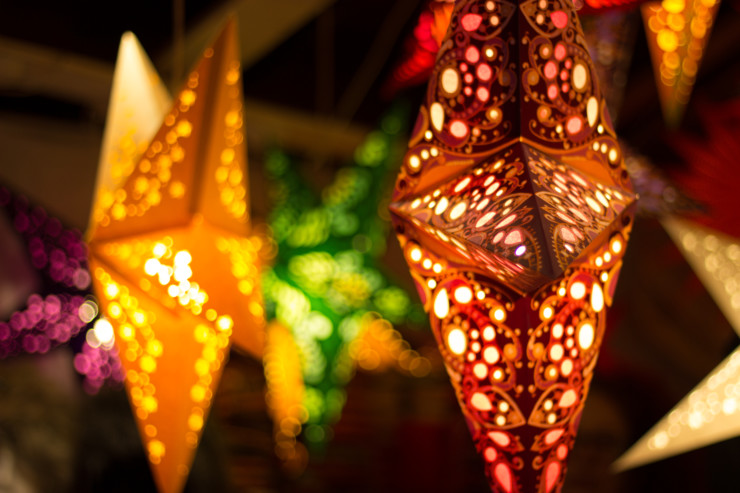
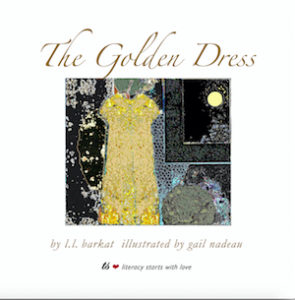
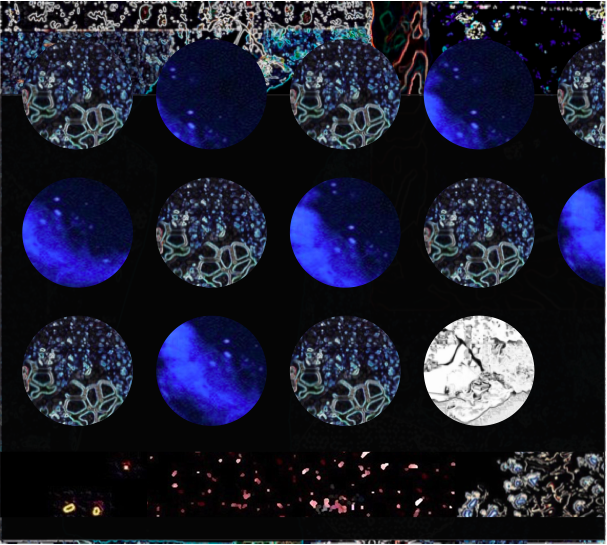
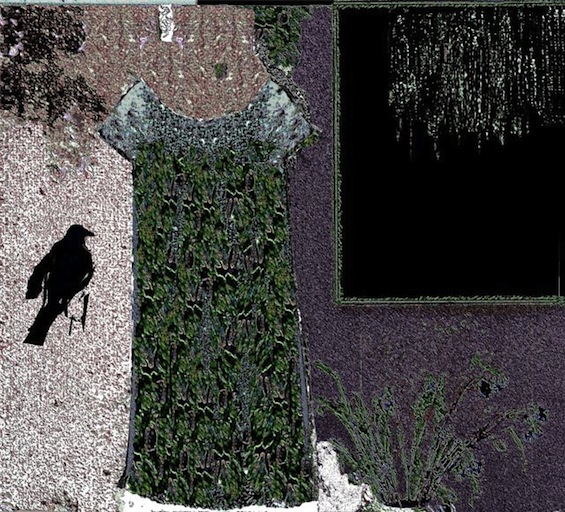
Sandra Heska King says
This book sits on the coffee table. I love looking at the illustrations. I missed the woman. This is a beautiful interview.
“The errors she made inexplicably led to better art.” This is a good reminder.
Megan Willome says
Sandy, that was one of my favorite lines too. I need to send it to a friend who has been agonizing over starting a blog, but she’s so worried about getting the words perfect for her first post that she’s stuck. Maybe art will come from the errors.
Laura Lynn Brown says
Another word for errors (well, two words): happy accidents.
Megan Willome says
Yes, Laura.
Maureen says
Lovely – both the artwork (which I’ve loved since seeing a piece for the first time back in 2014, or maybe earlier) and your interview, Megan.
What I think it notable is that these two artists – writer and illustrator discovered in each other the sensitivities and approach that made such a wonderful collaboration possible. The results of Laura’s and Gail’s work together have created an inspiration.
(I don’t know why but since yesterday, I have been unable to post Tweetspeak’s posts on Facebook. No problem doing so elsewhere.)
Maureen says
I see your interview did finally post on FB. Happy about that. I’ll try LW’s again this morning.
Megan Willome says
Yes, Maureen. You say it so well. I think the two artists had to be sensitive to each other.
Katie says
Megan,
Many, many thanks for interviewing Gail about her work for The Golden Dress!
It seems to be a story with more layers than I first found. Thank you for helping me discover more depth and appreciate more of the beauty and poignancy of this book:)
Hooray for this collaboration between L. L. and Gail – and may their work and relationship bring more beauty our way!
Gratefully,
Katie
Megan Willome says
I agree, Katie—more beauty, please!
Donna says
Megan I love this! I love the way you talk about the art and the story changing each other, looping. And I really love the way the illustrator talks about her art… How things show up on their own. That is so much my experience. It’s what surprises me the most about creating pieces and sometimes I wonder who’s in charge of this art! Certainly it isn’t me! I love it when I can peek into other artists’ process and find it feels familiar to my own. So thank you for sharing this with all of us. It’s a very special piece. 🙂
Megan Willome says
Donna, I’m so glad to know Gail’s words resonated with your experience as an artist.
Ahmad Jahangheer says
Wow, the creative process behind The Golden Dress is truly fascinating! It’s amazing how the art and the story influenced each other, creating a beautiful collaboration. And Gail Nadeau’s obsession with painting dresses is intriguing. I wonder what other hidden meanings and secrets lie within her artwork. 🎨✨